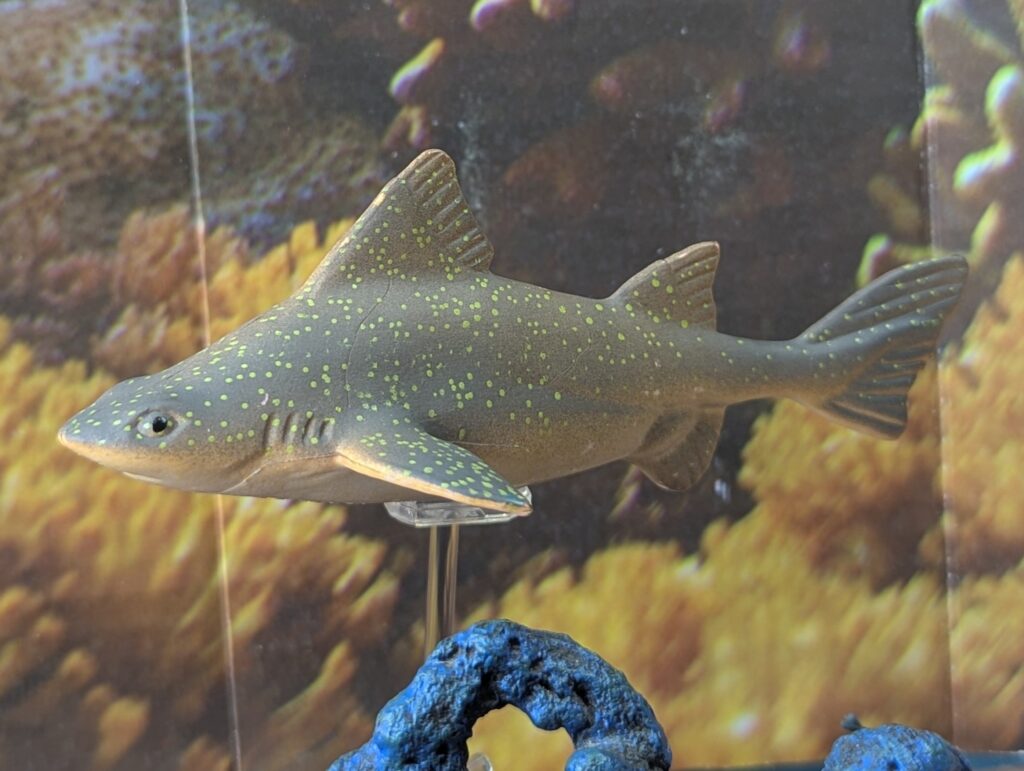
Today it’s my contribution to the Shark Week posts, and just like last year, it’s a very unusual species from the Discovery Science set “Return to Isle of Jaws”. As before, I haven’t actually see the show of the same name, but it did lead to a whole box set of shark figures. Some were even good enough to maintain in the collection! And this would be another shark species that has never been produced before, once again reflecting just how varied and unusual the living sharks can be.
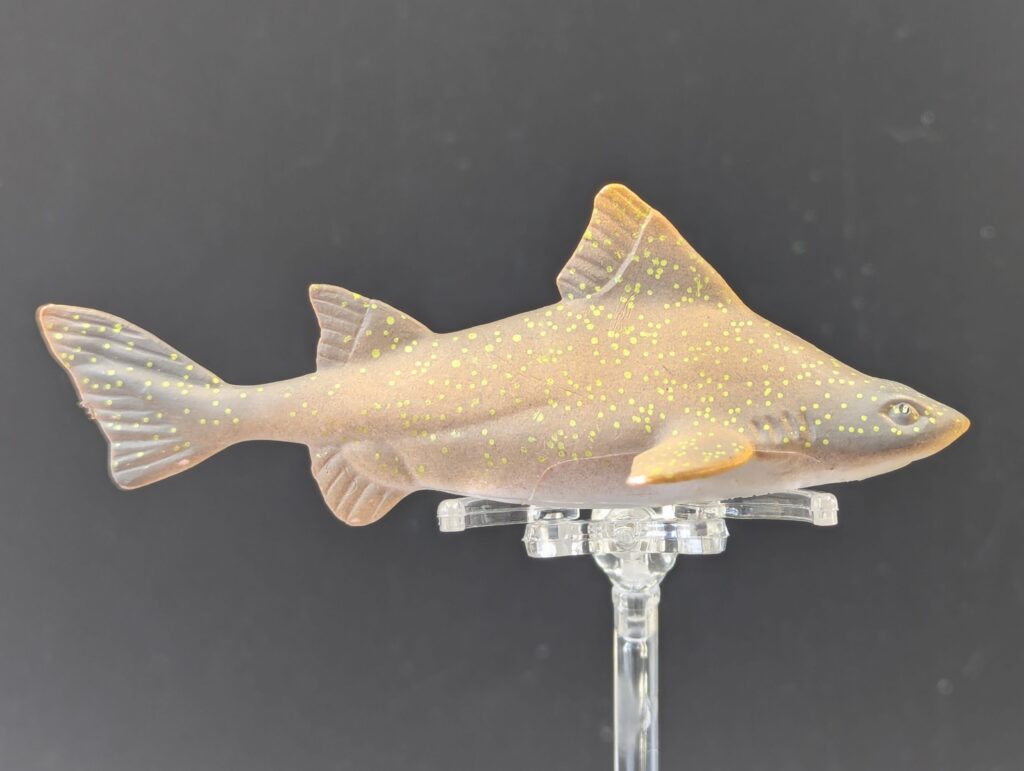
The species being looked at today is the angular roughshark, Oxynotus centrini. Roughsharks are part of the family Oxynotidae, one of the many families of ‘dogfishes’ in the order Squaliformes, a large group of sharks that share features like no anal fin, no nictitating membrane over the eyes, usually spines in front of the dorsal fins, and a sharp or pointed head. After that, dogfish can vary a lot in size, shape and behaviour. And one group that certainly stands out are the roughsharks.
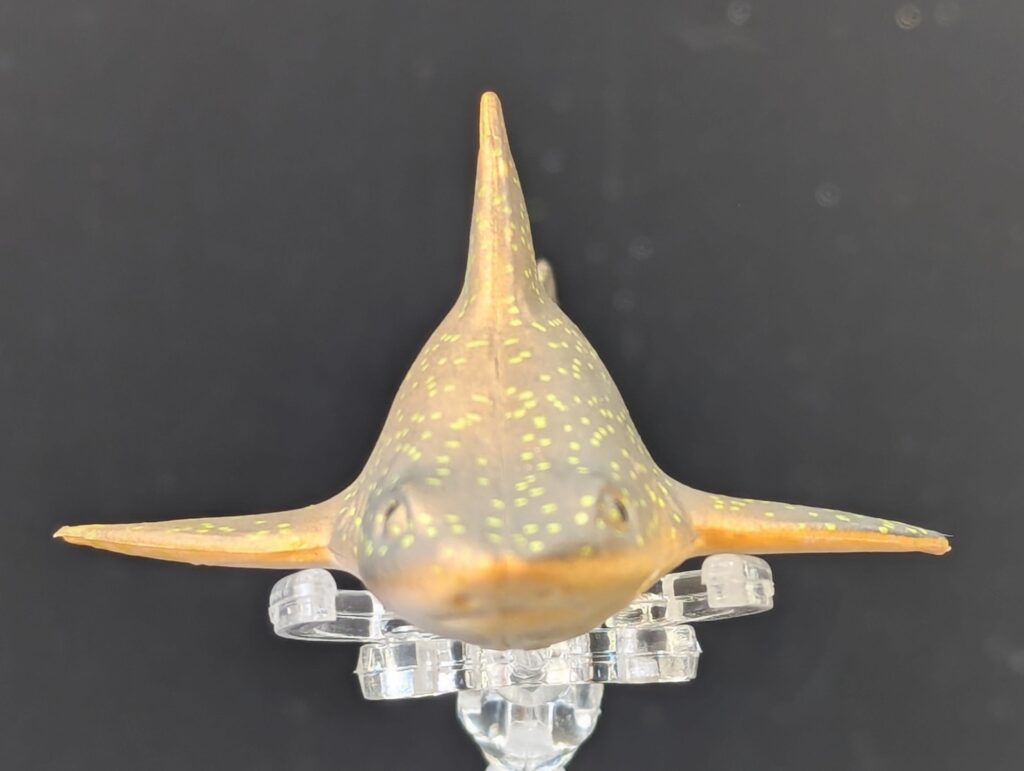
Roughsharks overall have high, broad bodies with flat bellies, giving a triangular cross-section. They are two very large, high dorsal fins, with the first dorsal fin place far forward towards the head. Roughsharks are also unusual in that they have a ‘luminous organ’, in this instance a glandular organ that gives the skin an appearance of small glowing spots, possibly as a form of camoflage in their preferred deeper habitats. This is different from other squaliform sharks that may have also have phosphorescent organs somewhere on the body. Roughsharks, as the name suggests, also have a very rough, prickly texture to their skin, more so than most sharks in the order that already tend to be rough-skinned (maybe not as much as bramble sharks, but no one makes one of those yet).
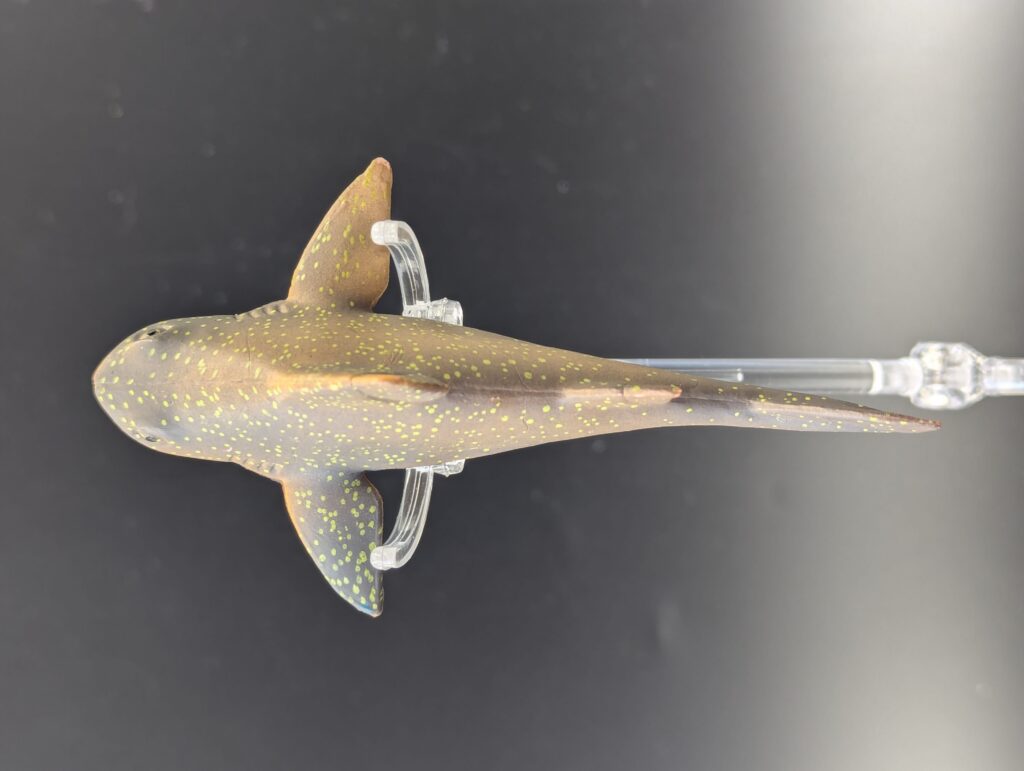
The angular roughshark is a relatively small shark, usually 1 metre (39 inches) in length, although they can get up to 150 cm (60 inches) long. Females are larger than males, so any individual this large is female. Although not a lot is known about their behaviour, it is known that they are bottom dwelling predators of arthropods, crustaceans, and worms. They are found in deeper waters along most of the eastern Atlantic coast from Norway south to South Africa, with possible samples from Mozambique (but those might be a different species). Angular roughsharks can also be found in the Mediterranean sea and adjacent areas, with varying population sizes. Their populations seem unstable, and vulnerable to fishing pressures as bycatch, causing them to be listed as Endangered by the IUCN.
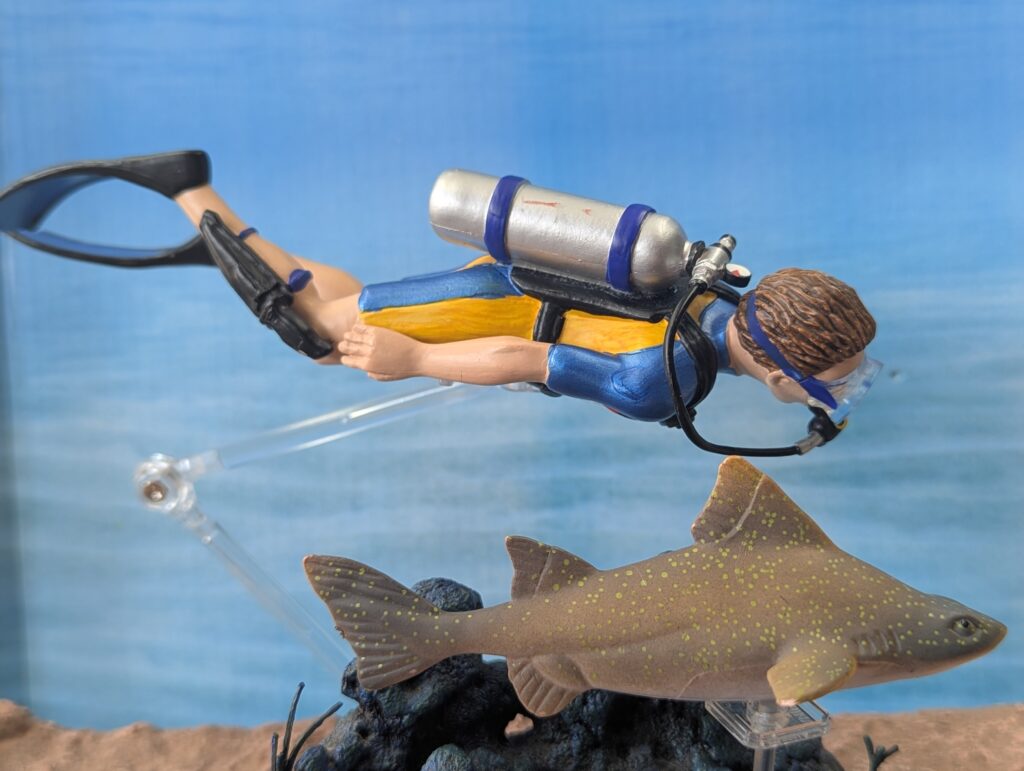
Turning to the figure itself, there are some good things and some…frustrating things. The figure is 11.1cm (4.3 inches) long, so it ranges from 1:9 for an average individual to 1:14 for a large one. In it’s overall first appearance in profile and from the front, it is clearly a roughshark, and given the heavy back and thick first dorsal, could only be an angular roughshark. So far so good. The snout is pointed, with distinct nostrils and underslung mouth. It’s not bad, although there should be a bit more of a ‘pug’ snout, with the nostrils facing more forward, kind of like a horn shark. Not bad, but not perfect. The eyes are appropriately large and almond shaped, which is good, but should be painted all black or all green, instead of the brown base colour with a black, roughly central pupil.
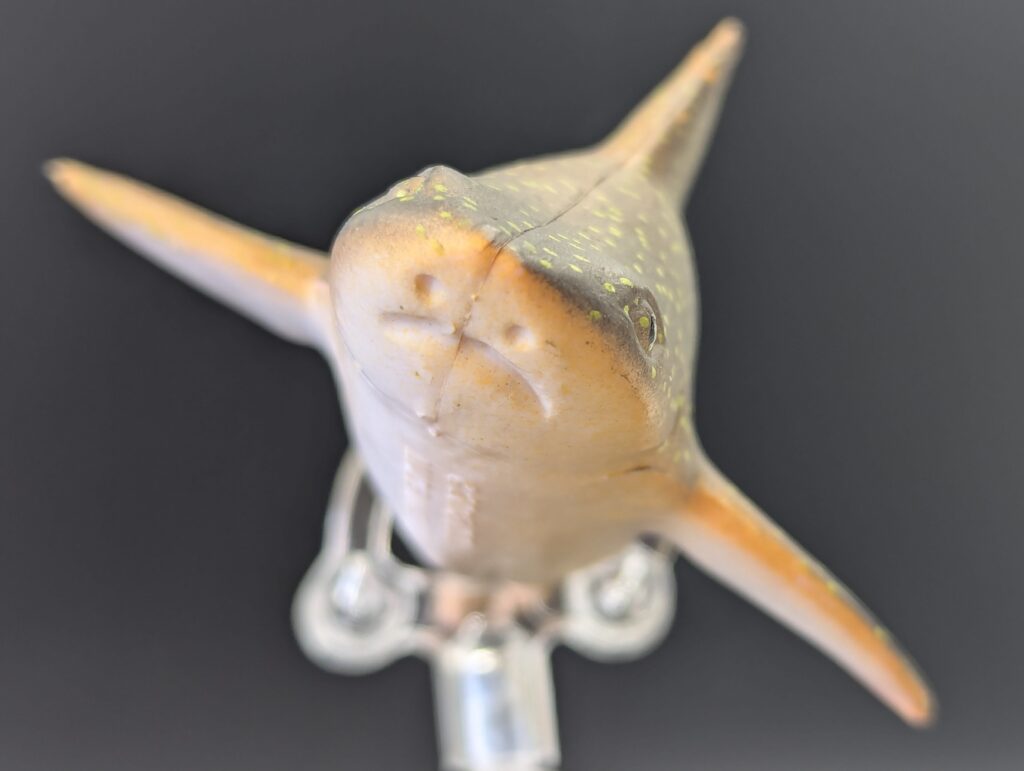
Behind the eye should be a large, vertical spiracle, instead, we have nothing at all. This is unfortunate, as the large spiracle is an angular roughshark feature, as is the ridge over the eyes with large, even rougher denticles. Of course, the entire figure is smooth (it’s rare to have a shark figure feel like sandpaper in any direction), but a pronounced ridge would have been good. And given the miss on the spiracle, do I even need to count the gills to know it’s the wrong number? Of course it’s four, not five. I don’t know why this is so hard for shark figures, five is the default (with six or seven for some unusual species), but I can’t necessarily fault this company, this issue has plagued even the best companies!
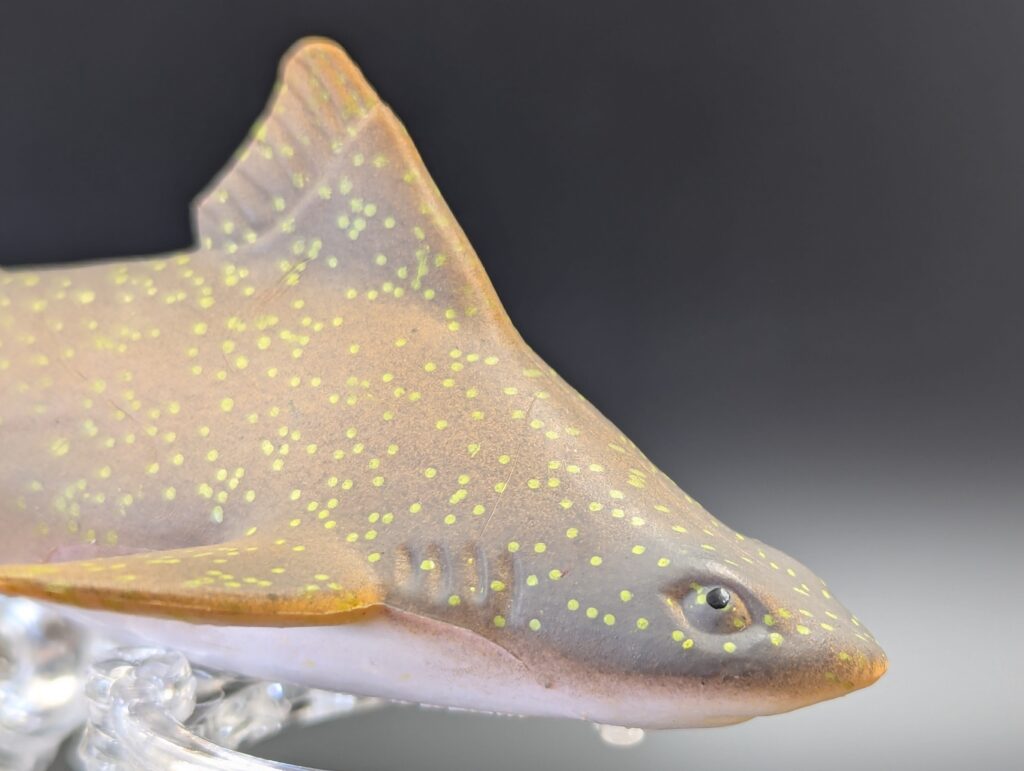
The fins appear okay. The pectoral fins are are broad and diamond shaped, extended outward. The rest of the fins, including the tail, have a thick base and a textured posterior margin, which isn’t a bad representation of the real animal’s finnage. The dorsal fins are appropriately large and high, although the second dorsal could be bigger. The spines are not present, but apparently they can be hidden under the flesh of the front margin, so maybe we can say that here, but a slight bump or thickening would have helped. The tail is also broad, and while heterocercal, is short and thick and a bit squared, with a distinct upward lobe. The ventral fin is…well, a single fin. It looks like an anal fin, which is problematic, since no squaliform has an anal fin. In turn, this means that there are no pelvic fins. This is a major miss. And also lets us all know that the model was probably designed based on a lateral view (this is as annoyingly common as the gill slit issue, but affects a lot of fish models). Pretending that this single fin is meant to be a pair of tightly pressed pelvic fins, no claspers are present, reinforcing the assumption that the figure represents a female.
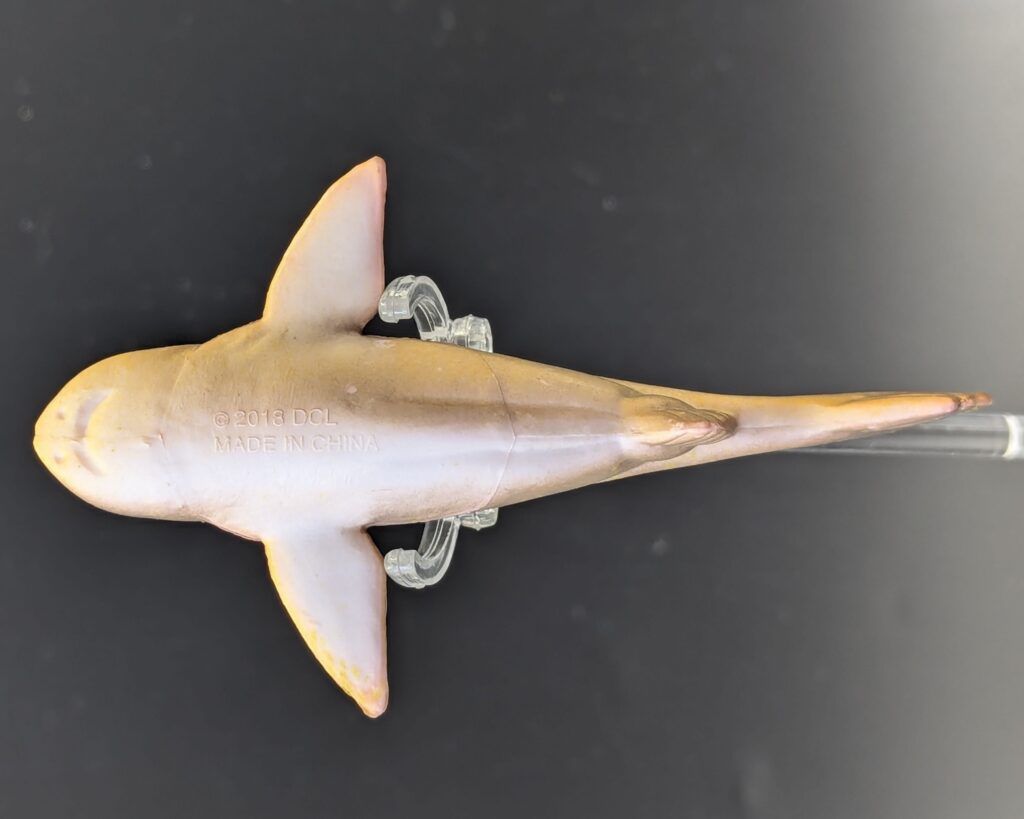
I’ve already alluded to the colour, and they didn’t do a bad job with that. The overall colour is a light brown over the entirety of the back and sides, very close to the general colour of an angular roughshark. The belly should be the same base colour but was left white on one side (yet another pet fish peeve…see the exhaustive times this comes up with Replica Toy Fish!) and just a light brown wash on the other, which could just as easily be a factory error. There is a bit of a dark, almost black wash over the head, back, dorsal margins and pectoral fins. This blotchiness is variably present in angular roughsharks, and usually indicates older individuals, so it’s a great detail to capture on the figure. There are no other pronounced markings, which means the figure is missing the white line that should be below the eye. What the figure does have is a broad scattering of tiny, light yellow-green dots–clearly meant to reflect the aforementioned luminous organ in the skin, which is a fantastic touch. Of course, if someone doesn’t know about this organ (I didn’t until researching the species just now), it might just appear to be a painter’s flourish to vary up the brown body.
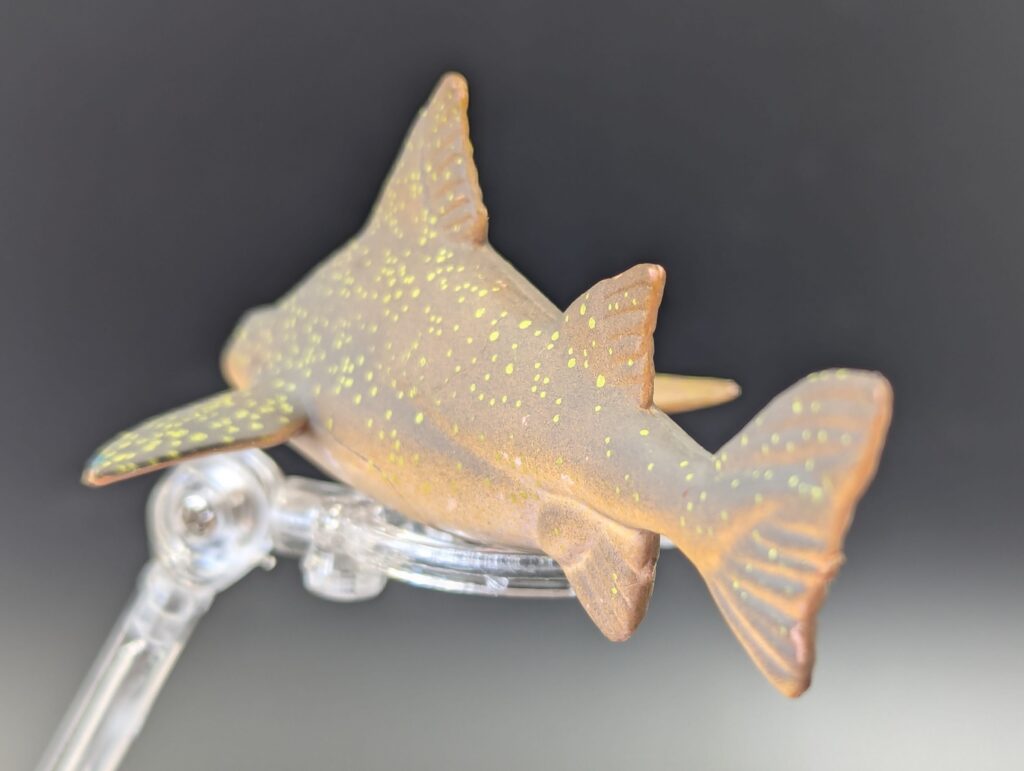
So that is the angular roughshark from Discovery Science. I clearly took issue with a few, to me, glaring flaws–the spiracle, the pelvic/anal fins, and the gill slits. I can be more forgiving on smaller features like the dorsal spines, the belly colour, and maybe even the snout (perhaps that’s a bigger one). But as a toy, in a relatively cheap set, it works quite well. Especially given the range of quality in these sets, the fact that it is clear and obvious exactly what species it is meant to be, with no ambiguity, is a bit of a win (can’t say that with every figure in the boxes). It’s great to have some of these more obscure, less-typical sharks made as figures and can only help promote their conservation. I would be thrilled to see other companies tackle sharks from deeper into the selachian family tree, and really bring out the strange and wonderful variety found within!
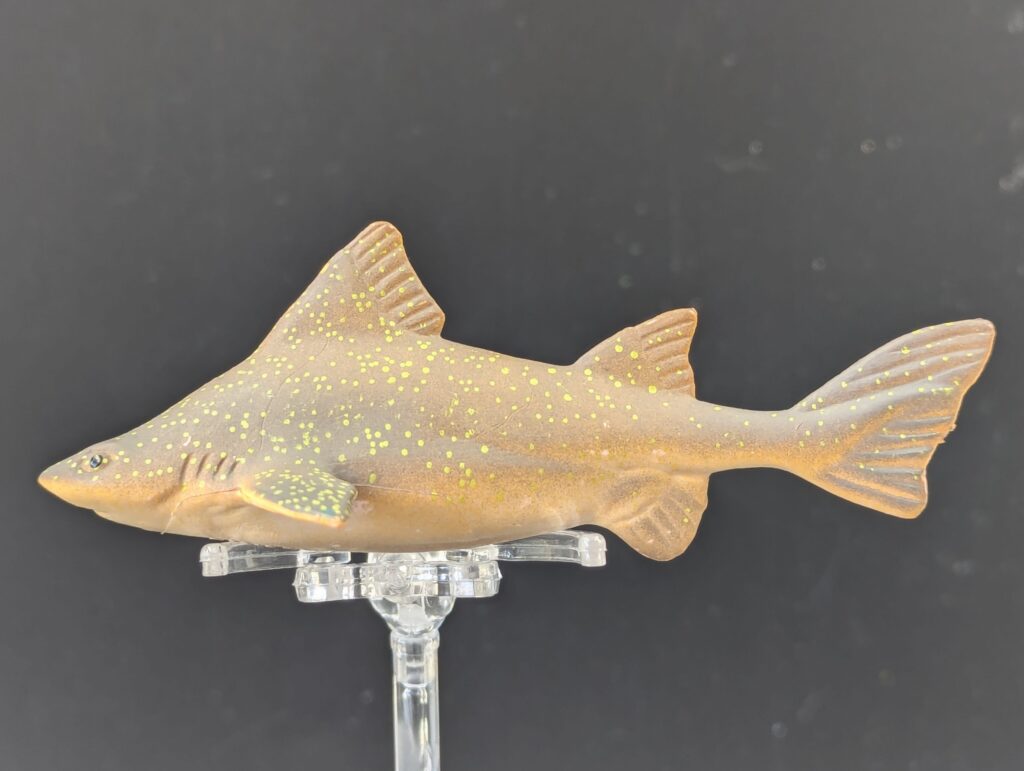
Disclaimer: links to Ebay and Amazon on the AnimalToyBlog are affiliate links, so we make a small commission if you use them. Thanks for supporting us!




Definitely a standout model from the Discovery set! As I’ve noticed with other figures from that set, there seems to have been different paint schemes with different production runs. The one I have is much more orange in the body (the brown paint over the top is far fainter) and it has green spots instead of yellow. I think I prefer the color scheme of yours!
I’m pretty sure mine was from the first run but it’s hard to know.
It’s a shame that many of the figures suffer from profile – only sculpt research. Messes up the posterior fins!